From Life-Size to Larger than Life: Nick Cave on ‘Amalgams and Graphts’
The gallery is on view at Jack Shainman Gallery at 46 Lafayette St., New York, until March 15.
In his early years as an artist, Nick Cave became renowned for his Soundsuits. These life-size sculptural objects were initially symbolized as a metaphor for armor and empowerment after the beating of Rodney King in 1991. Until now, even though the Soundsuits were scaled to be Cave’s body, they represented an otherworldly skin absent of race, gender, and class. They gave viewers a chance to put a veil over perception and bias toward each of the Soundsuits’ identities.
After over 30 years, Cave is finally transitioning into the next phase of his work, as seen in his newest exhibition, Amalgams and Graphts. Nestled in Jack Shainman Gallery’s flagship Tribeca location at the Clock Tower Building, you’re met with detailed 30-foot ceilings, marble pillars, and walls with inconspicuous safes. After transforming the historic building, it is now home to Cave’s 26-foot sculpture, Amalgam (Origin). Serving as an evolution of the Soundsuits, Amalgam (Origin) is a mega installation covered in birds, trees, branches, florals, and fruits. The faceless, towering structure represents Cave’s actual body—conveying his own—as well as nature’s evolution.
Amalgam (Plot) returns to Cave’s consistent motif of confronting the exploitation of Black and Brown bodies. Two bronze life-size figures lie next to one another on the floor, mimicking the racially motivated attack on King by the police. The contrasting yet harmonious figures show one body facing the sky and the other facing the ground. Surrounding the sky-facing figure is an abundant garden memorial embodying resistance, empowerment, and renewal. The third and final Amalgam is placed on the other side of the Clock Tower Building—a seated version of Amalgam (Origin) and intricate wallwork designed in collaboration with partner Bob Faust, visible to anyone walking past the building. Altogether, the three Amalgams play cohesive roles in acknowledging oppression and how to succeed in a system made for Black and Brown bodies to fail.
Along the walls of the Clock Tower Building are Cave’s Graphts. For the first time, he includes his recognizable self through mixed media collections such as ultra-elaborate needlepoint self-portraits encompassed by thousands of vintage floral trays and bronze 3D gardens. Cave uses layering on wood panels “to serve,” a concept popular in ballroom and voguing culture, as well as in Black communities, which were often coined as servants.
Throughout his career, most of Cave’s artworks have been in private institutions. However, as part of his ongoing evolution, Cave wants his work to be in more public spaces that anyone can access. Being said, Amalgam (Origin) will permanently live in Frederick Meijer Gardens & Sculpture Park in Grand Rapids, MI. To continue his dedication to publicizing his art, his work is also in 42nd Street Times Square subway station and the Princeton University Art Museum.
I sat down with Cave in the middle of his exhibition at Jack Shainman Gallery. We dissected Amalgams and Graphts and his ongoing personal and artistic evolution. Read the full interview below.
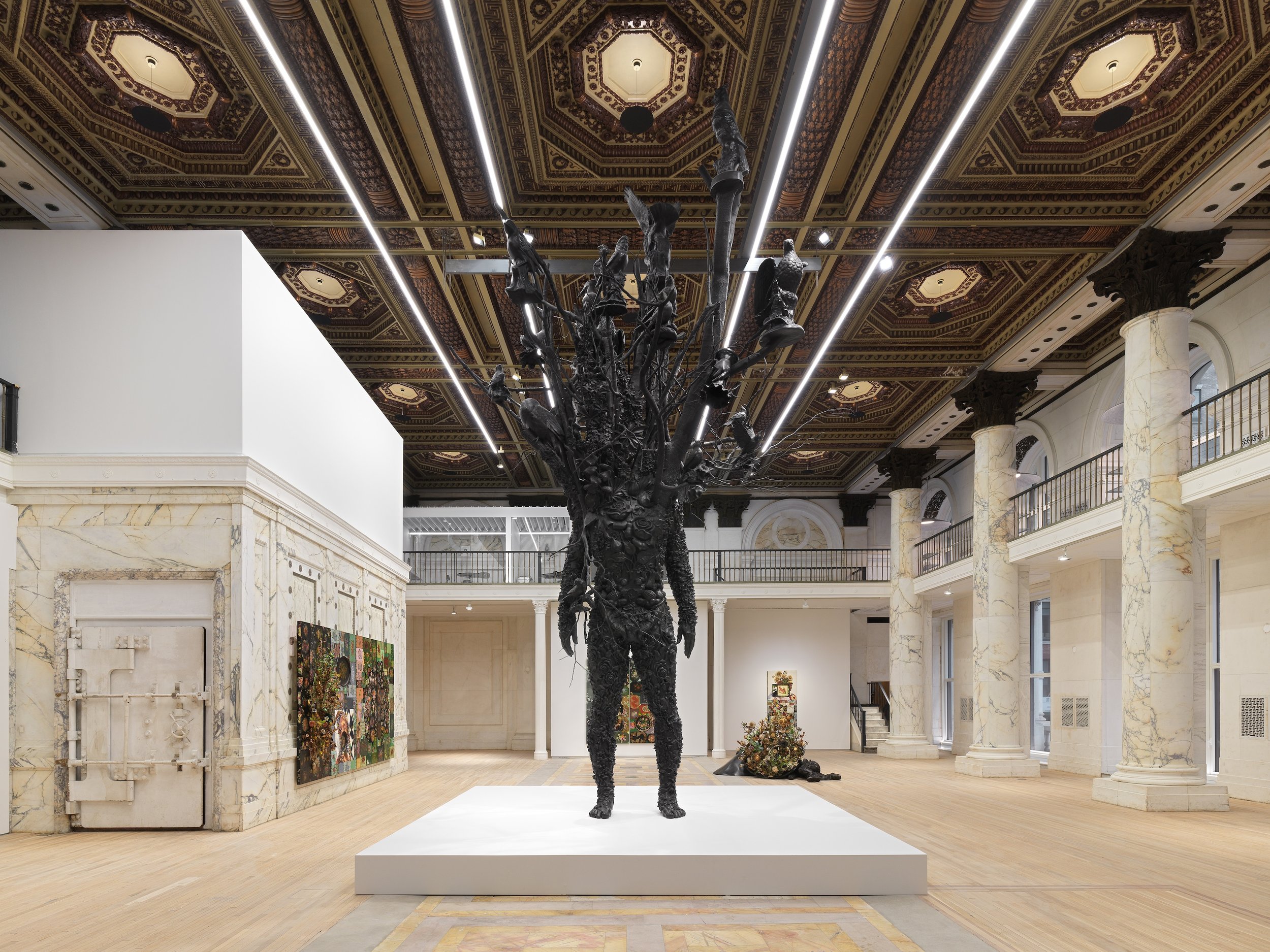

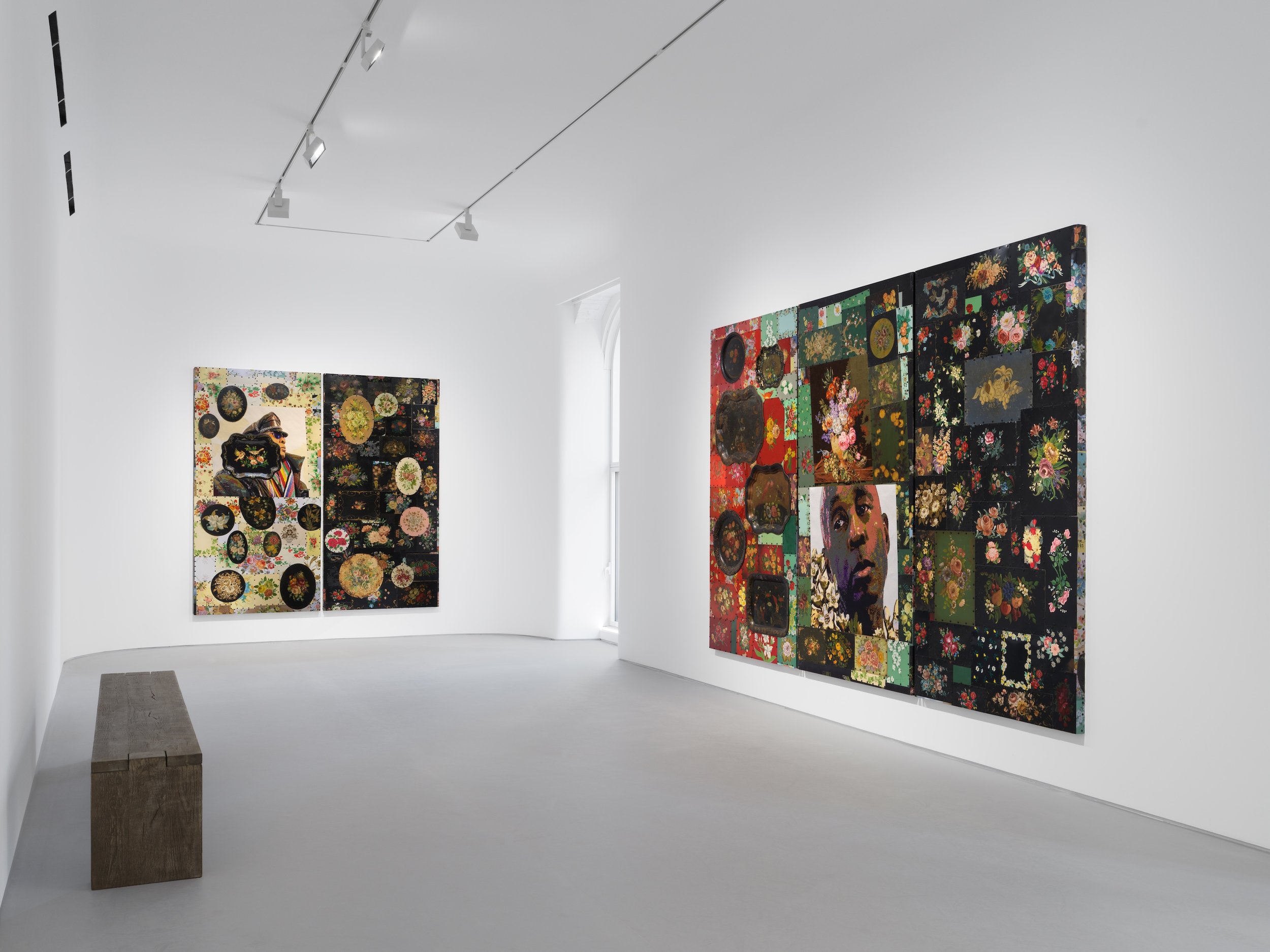
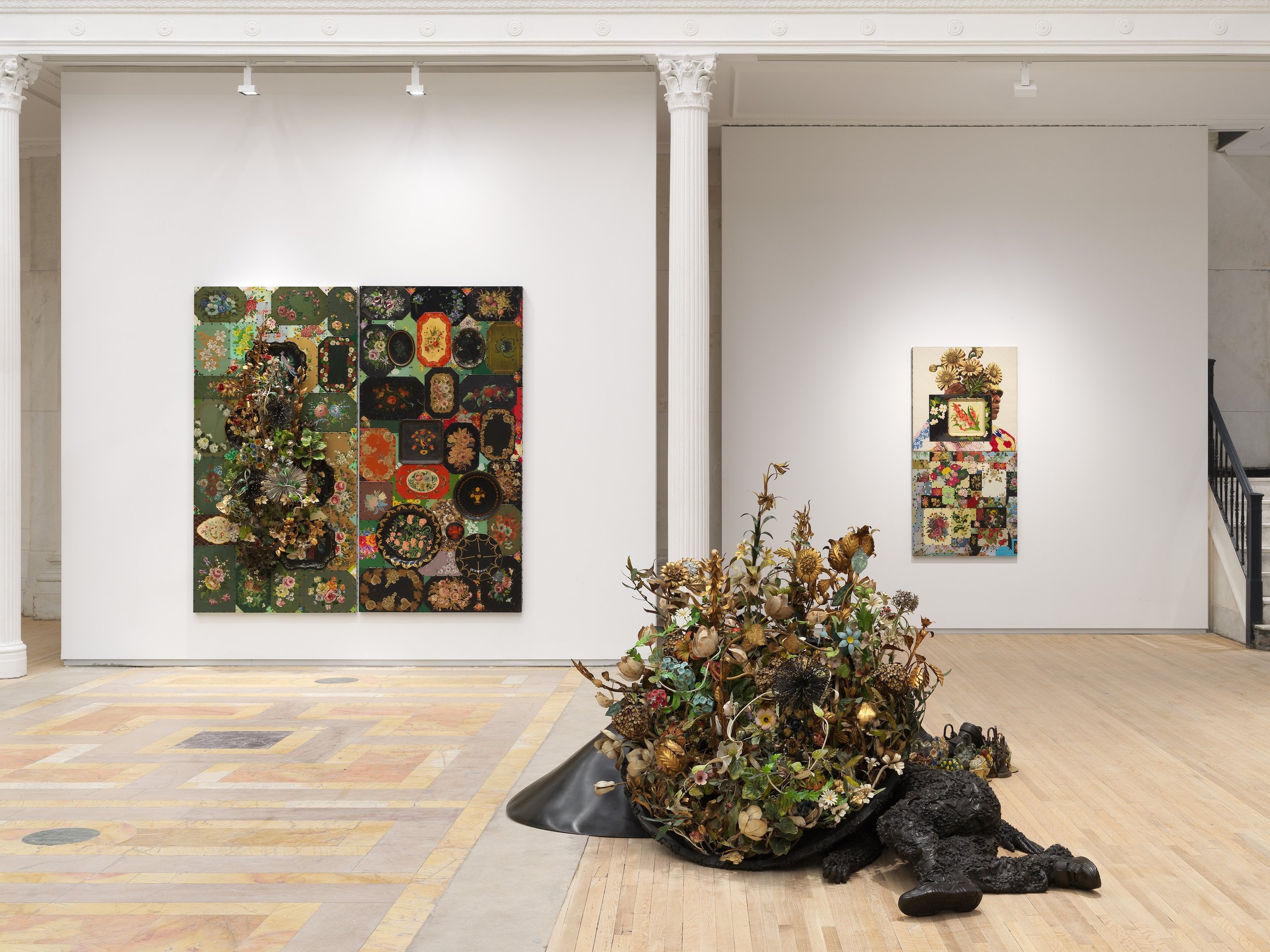
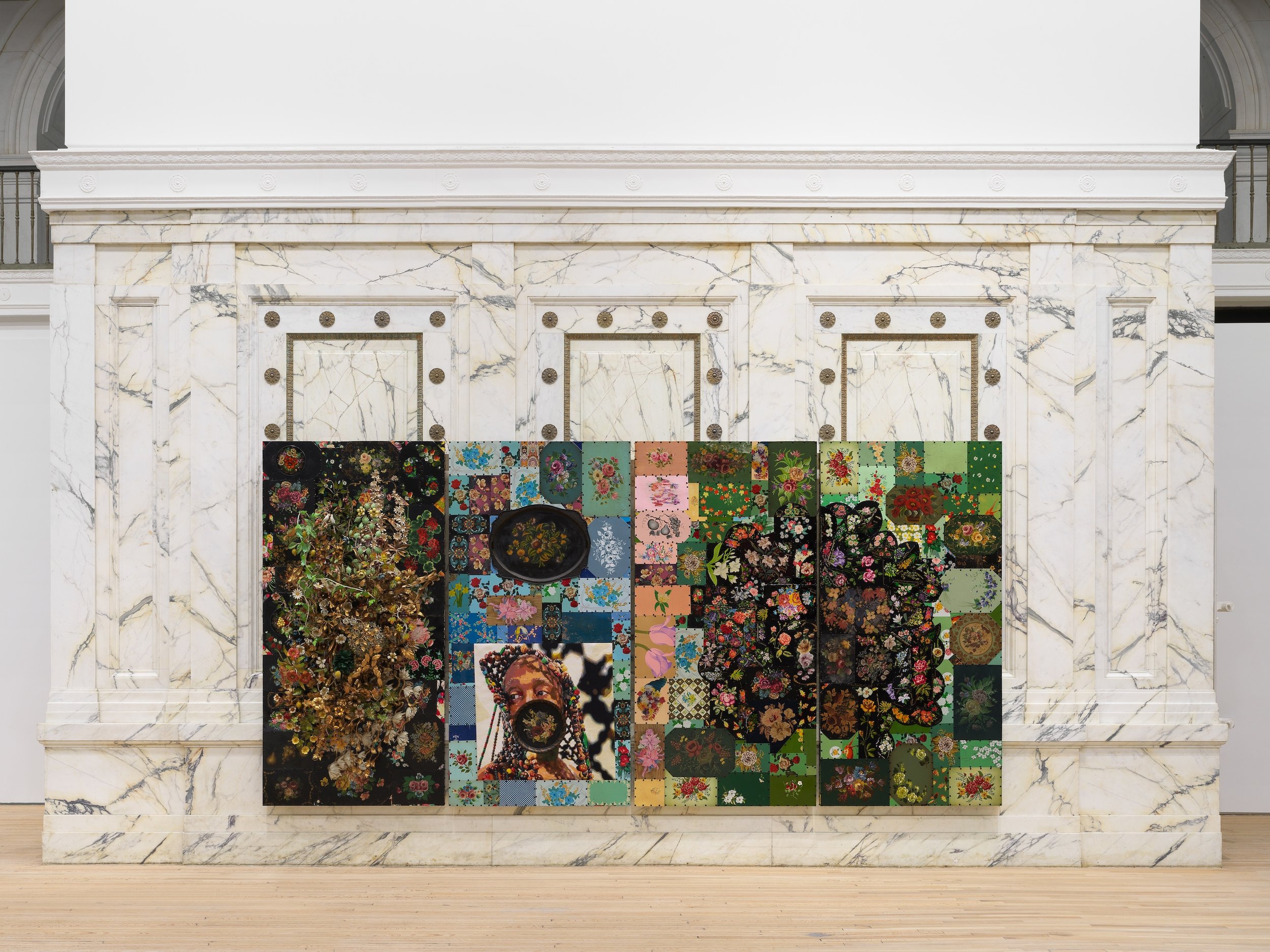
Congratulations on Amalgrams and Graphts! It’s so mesmerizing. You mentioned that this exhibition was the ‘death’ and ‘evolution’ of the Soundsuits. You took over a two-year break from making art, so how did this come to be?
It’s not the death but the transition of the Soundsuits. It was really about trying to get the Soundsuits out of institutions and into public spaces, primarily because we still have a large part of the population that doesn’t frequent museums. I feel very intimidated by museums, and as an artist with a conscience, I’ve always had a civic responsibility to put my work into the world.
Did you usually have trouble putting your art into the world?
No, because I would always do it in the form of performance—but performance is temporary.
What kind of public institutions do you want your works to be in?
Museums and public spaces. The sculpture will live in the Meijer Botanical Garden, so it’ll be accessible to anyone.
How long did it take to make something of the Amalgam (Origin) scale, and where did you make it?
I worked with a foundry upstate called Workshop. They’ve worked with many artists and are amazing to work with. I had to scout a number of foundries, and there are many on the East Coast and some on the West Coast. It’s really about relationships and finding who you vibe with the best. This piece took nine months to build, which is almost shocking.
What was that creative process like in terms of its size?
First, we developed the piece through digital work. I worked with Mark Lyon. We had Zoom meetings every Sunday from 1 p.m. to 3 p.m. to help build the piece. I went out there a number of times, and they would scan my body because the sculpture is my body. Then, we scanned all sorts of objects, which became the adornments we applied to the body. It was really all digital scanning and 3D printing.
It’s so hard to imagine 3D printing something that large.
Girl, it was hard for me to imagine. I’m so used to having to build it in order to get the mold. That middleman is no longer present, so the project time is cut in half.
How did you choose the objects on the body, such as the fruits, birds, and branches?
The surface of the body is all Cyroco, a plastic cast object from the early 1960s used for floral-based wall decorations. That is what we scanned in order to get his floral motif on the body. The branches and tree elements were from me going to Jack’s property and pulling fallen trees apart. I then brought them back to the Workshop and built the entire apparatus.
Is the floral motif how Amalgams and Graphts correlate?
Totally. It’s a continuation of the florals and floral arrangements within the work. The birds we scanned and blew up were all ceramic birds. Some of those birds are four feet tall. From down here, they look tall, but when they go up, you can’t even tell the size.

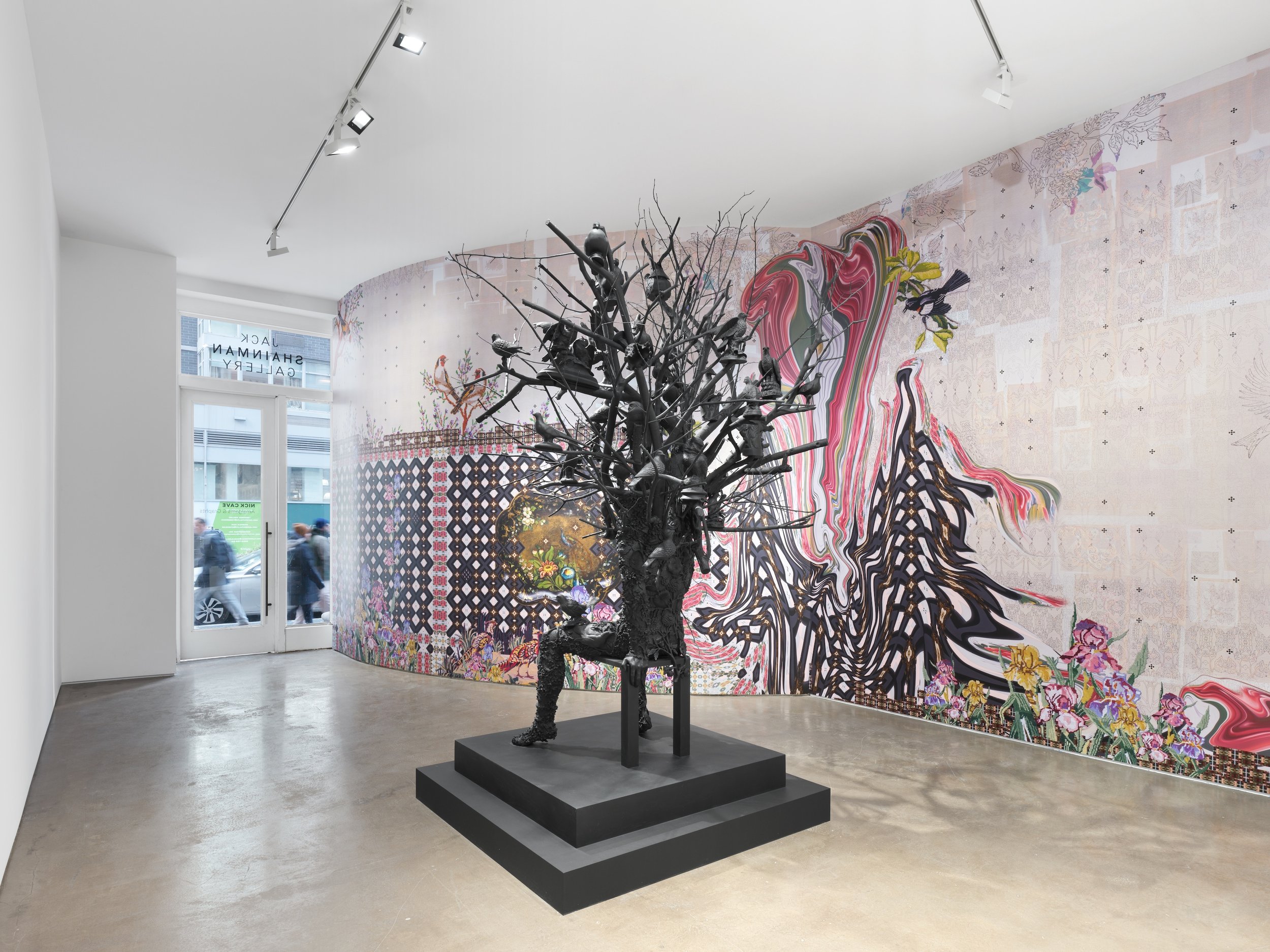
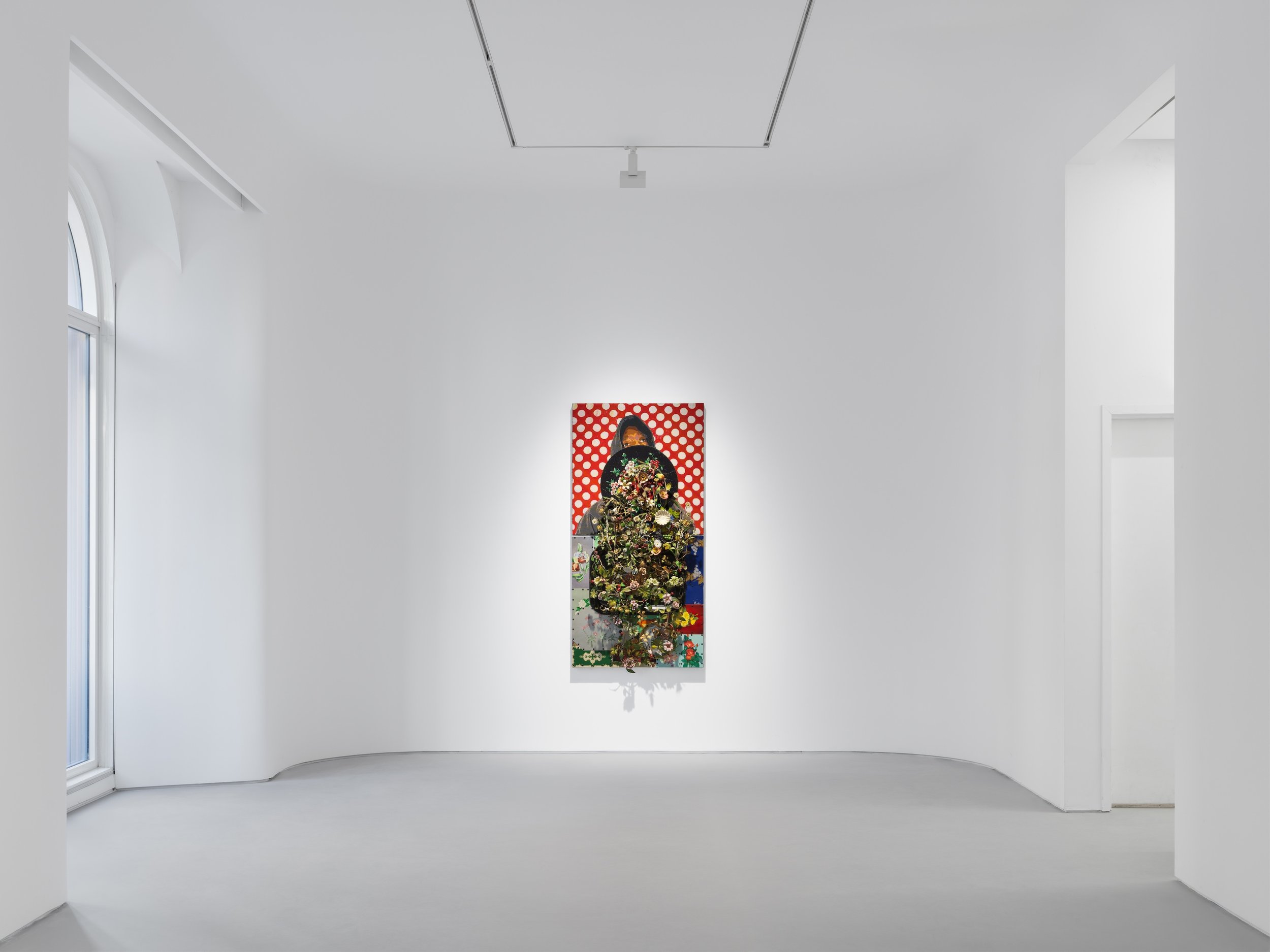
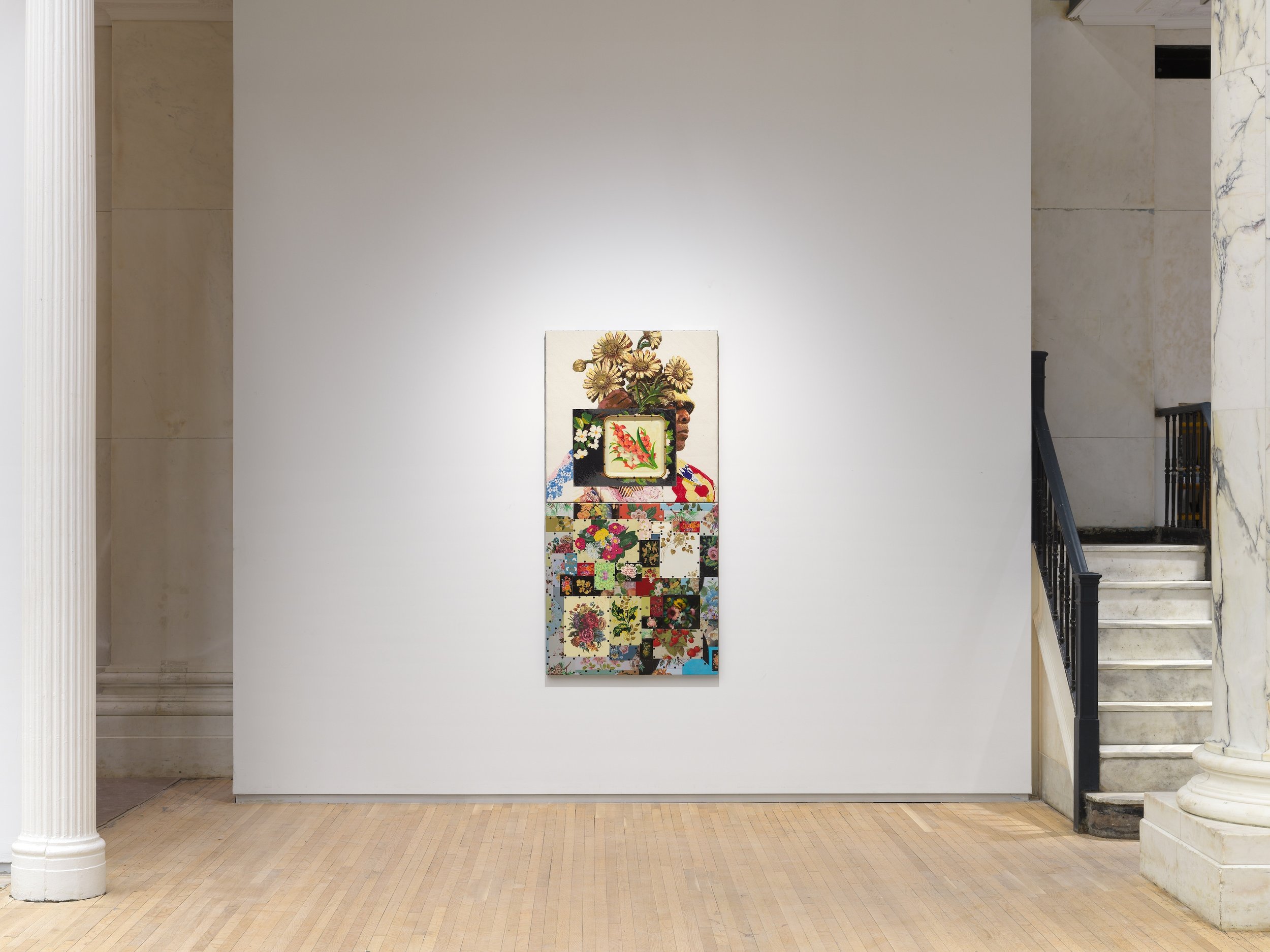

I also see many state flowers in some of the Graphts panels and self-portraits, which you’ve never done before. Can you discuss the designs you have on the Graphts?
I wanted to relate the four-panel to the pieces on the floor. All of those flowers are the national flowers for each state, but the activity that happens in this piece on the floor happens in all the states as well: the abuse of Black and Brown bodies. That was the connection I wanted to make. The field where the state garden is is a garden plot. It relates back to growing.
What material did you use for your self-portraits?
It’s all needlepoint.
How long did each one take?
About three months.
The details are immaculate. From afar, it almost looks like a digital illustration, but when you look at it up close, you can see the detail and material. I’m also wondering about the metal trays bolted into the panels.
The levels of painting were so extraordinary on some of the trays that I wanted to preserve. Part of this is about preservation and the covering up of history. The moment you paint on the tray, we no longer read it as what was symbolically known as the tray to be a form of service. I thought about the history being removed from public libraries and public school systems. Our history has always been rewritten by someone else. I was interested in this object and how it’s flipped on its head. Not only is it painted, but I cut away the rim to make it flat. That’s another layer on top of history. It keeps pushing history down and away, implying a form of repression. At the same time, there is new birth and resilience.
You’re from Missouri. Did that impact how you executed Amalgams and Graphts or your general work?
No. It’s perhaps some of the stories that my mother shared with me, and they found their way into the work. I was more interested in the trays as a color field. When I cut away at the rim, I looked at it as a web-building color on the surface. I also thought about the idea of piecing and quilt-making traditions within Black culture. All of the hardware holds it all together. They’re a form of stitching and mending things.
How did you source all of these floral trays?
They’re all hand-painted by different individuals and collected from flea markets and thrift stores. This body of work probably took a year to source them. There are thousands of them. I would get hundreds in the mail monthly.
Why did you choose to work with bronze on Amalgams and Graphts?
I did research on the history of floral compositions and paintings as a way of embellishing a room. I looked at French floral paintings and their decadence—as well as the idea of giving flowers to someone. It’s a way of adorning and celebrating as an art form.
Is this giving flowers to yourself?
No. It’s you and me reflecting on what we deserve. Remember that you deserve your flowers, and honor yourself and your identity.
Would you say these works to be your ‘final form?’
This is the new direction. This is the future of my work.

